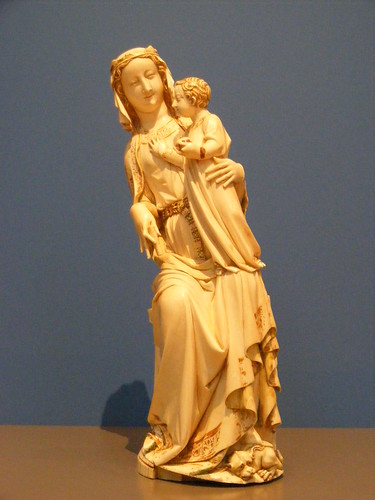The British Museum: A Rogue Curator and a Long History of Theft
British Museum #BritishMuseum

Stolen artifacts, precious gems, a disgraced curator — the most recent scandal to sweep the British Museum sounds like a Hollywood blockbuster in the making. In August, Peter Higgs, the former curator of Greek collections, was accused of stealing artifacts from their collection and selling them on eBay.
Ironically, Higgs was a member of the museum’s “Monuments Men,” a group that “traces looted antiquities.” The group originated at the tail end of WWII with the goal of recovering artifacts from Nazi-occupied territory.
Many of the stolen artifacts, numbering around 2,000, remain unrecovered — only 350 artifacts have been found. The museum launched a website in September with the objective of obtaining the public’s help in finding the missing objects. The website lists objects that are similar to those that are missing rather than the exact objects themselves.
This lack of precision is due to the fact that Higgs’s successful pilfering allegedly involved selling artifacts that were never registered. In fact, around half of the museum’s collection remains uncatalogued, totalling to approximately four million art works.
The museum’s solution to protecting its murky, undefined swap of artworks is to digitize the entirety of their collection, which they announced on Oct. 18th, 2023. This digitization process is projected to cost multiple millions of dollars and will take five years to complete.
This scandal comes in an age of reckoning for museums in which questions of repatriation and the history of acquisition have come to the forefront, placing the British Museum under fire. Egypt and Greece have called upon the British Museum to return the Rosetta Stone and the Elgin Marbles respectively.
Whereas other museums have begun to return objects to their nations of origin, the British Museum is barred from repatriation under a statute from 1963 that prevents the museum from returning works. In a bare minimum gesture, the museum’s website includes a “contested objects” section.
Heists have occupied popular culture and left investigators baffled. In 1990, 13 artworks were stolen from the Isabella Stewart Gardner Museum; a 10 million dollar reward is still offered for the safe return of the stolen works. In 2020, a Van Gogh was stolen from a Dutch museum, and has since been recovered. While these heists were pulled off by outsiders, the Higgs scandal is unique in that it involves a prominent museum insider that utilized his particular knowledge to his own advantage.
The era of swashbuckling museum insiders has come to an end, yet this incident shows that more work needs to be done on the level of culture in terms of how works of art are tracked and valued. By digitizing their entire collection, the British Museum is diving deep into the process of documenting a fraught history of acquisition. Even one of its own curators seemed to believe some of their objects, to put it rather harshly, were better served outside of the museum. This incident reveals the vulnerability of museums to corruption, a history not unknown to these institutions.
—Staff writer Sophia S. Pasalis can be reached at sophia.pasalis@thecrimson.com.